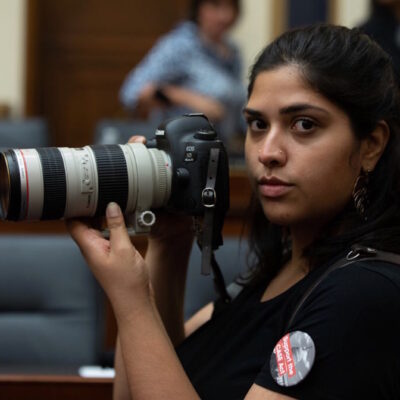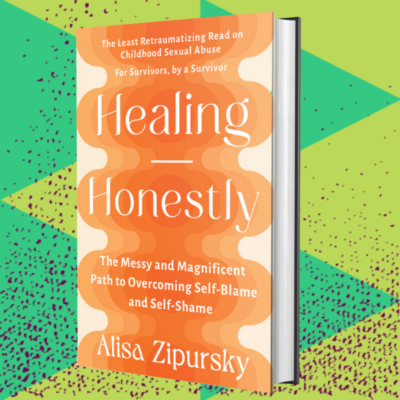This story contains discussion of healing from domestic violence and non-violent, non-graphic photographs of survivors
I am so very excited about this week’s story in which I interviewed my friend, the brilliant, powerful, beautiful goddess Mariah Miranda about photography and visual representations of domestic violence survivorship. Mariah is a badass visual journalist who takes stunning photos, as you’ll see below, that capture the essence of the depth and complexity of a person healing from trauma.
In 2016, Mariah exhibited her thesis, In the Wake of Trauma, for the Corcoran School of the Arts & Design, which was an exploration of the aftermath of domestic violence in millennials. The project (images below), stemmed from her own experiences as a survivor and a desire to challenge the dominant narratives that we imagine in our minds when we say “domestic violence survivor.” I sat down with Mariah on a beautiful fall day in DC with my puppy to ask her about what we imagine when we talk about domestic violence, what it’s like to photograph other survivors, and why printing on plexiglass is such a boss choice.
AZ: Let’s talk about In the Wake of Trauma and why you chose to center millennial domestic survivorship in your project.
MM: I saw this project as a way to process my own story of survivorship. There are so many dominant images of what domestic violence looks like that are not reflective of my story or the stories of the people I know. There is the common visual of a white woman sitting on a trailer park porch watching a man get taken away in handcuffs. I would look at the many shocking, trauma-porn style images of the gore of domestic violence in popular culture and wonder why we don’t follow up with these women and their children and see how they are surviving and healing. I wanted to show survivors in a positive light and break the stigma that we are broken people and that our stories end when the violence ends.
Depicting domestic violence through a survivor’s lens
AZ: What’s it like as a survivor to photograph other survivors?
MM: What I photograph and how I do it is very telling of me as an individual and an indication of who I am. I was able to photograph these people in this way because I am a survivor. Someone who hadn’t experienced that wouldn’t approach it the same way. People trusted me and opened up to me, and I realize that that’s how I work with my journalism.
AZ: So people tell you their stories…
MM: I’m able to be someone’s safe space, and that’s something I don’t take lightly. For people to trust in me to tell their stories, photograph them and then tell their stories publicly says that they trust I will treat them with respect and understanding.
If I were to analyze my body of work, I recognize I photograph the subjects right in the middle, making them the focus. All the colors are muted and the toneage is very accurate to real life depiction. The subjects are soft and either looking directly at the camera, or they’re looking away in a way that permits viewership in a more passive way.
I realize now that I photograph people from a lower angle, which you aren’t technically supposed to do, because it elevates people in a god-like way. I am exalting my subjects.
I set the tone that the viewer is allowed to be here but the viewer isn’t owed any explanation; you are just here as a guest. So often as survivors, people feel they are owed our stories of trauma and our darkest moments.
AZ: Are there other artistic decisions you made that you think were specifically informed by your experience of being a survivor?
MM: During the project I sat down with my advisor, who is a photojournalist, and she told me she wanted to see more action in my work, which is normal for photojournalism. I was headstrong and insisted that this project would be about stillness. We’ve all seen the action when it comes to domestic violence, the images of that shocking trauma and violence. Instead, I wanted my viewer to sit in the stillness, to see it and be okay with this depiction of survivorship. I want people to learn to be comfortable in the silence.
I also printed my portraits on plexiglass, which is an unusual decision. Often, photographers don’t like plexiglass because it is reflective, which is precisely why I chose it. I wanted the viewer to see the subject, while simultaneously seeing their own reactions to the work.
The emotional toll of creating In the Wake of Trauma
AZ: This project was your first time publicly disclosing your survivorship and you were also having so many other people sharing their stories of trauma with you. How did you care for yourself while doing the work?
MM: I did not. I went through by far the hardest year in my adult life. I was drinking all the time and I’ve always had body image issues, but my binging disorder escalated a lot. While working on this project I was sexually violated by a roommate. At the time, I kept everything so tight and bottled in and I didn’t permit any space to let it all out and process my trauma, and I ended up in another abusive relationship.
AZ: What have you learned from that experience about how to honor your needs?
MM: What I learned from that situation is that if I didn’t address things and work on them and heal from my trauma, it was going to resurface until I fucking dealt with it. Which, for me, meant being intentional about who I spend my time with, having healthy boundaries with people, being communicative with partners and staying in tune with what I’m feeling in any given moment.
It took me a year and a half to heal from the experience of producing this thesis while being retriggered and living in an unsafe environment, but the more I addressed it, the easier and easier it got.
AZ: What advice would you have for other survivors looking to explore healing and trauma through visual arts?
MM: I would really recommend creating intentional time to process and unload, whatever that may look like for you. In the past, I used really unhealthy habits to cope, but if I could talk to me two years ago, I’d tell myself to have a good sleep and exercise routine because I know for me it is the way I can care for my mind and body.
I had an experience of photographing a subject revisiting the home of her abusive father for the first time in 10 years. In that emotionally charged moment I had to find stability in myself to keep my shit together and get the visuals I needed. I needed to have my own space to process that really loaded experience in a way which was healthy and not in front of my subject.
AZ: I have to end this interview with my favorite question, “What does healing mean to you?”
MM: What healing means to me is not linear, it changes. Today I’m feeling very empowered and confident. Even when I’m upset and hurt, I feel a sense of control. Having an intentional grasp on my identity, entity and existence in this moment has been really powerful for my healing.
To learn more about Mariah’s work visit her website (also, you should hire to photograph everything in your life, trust me) and also follow her beautiful photos on Instagram.

